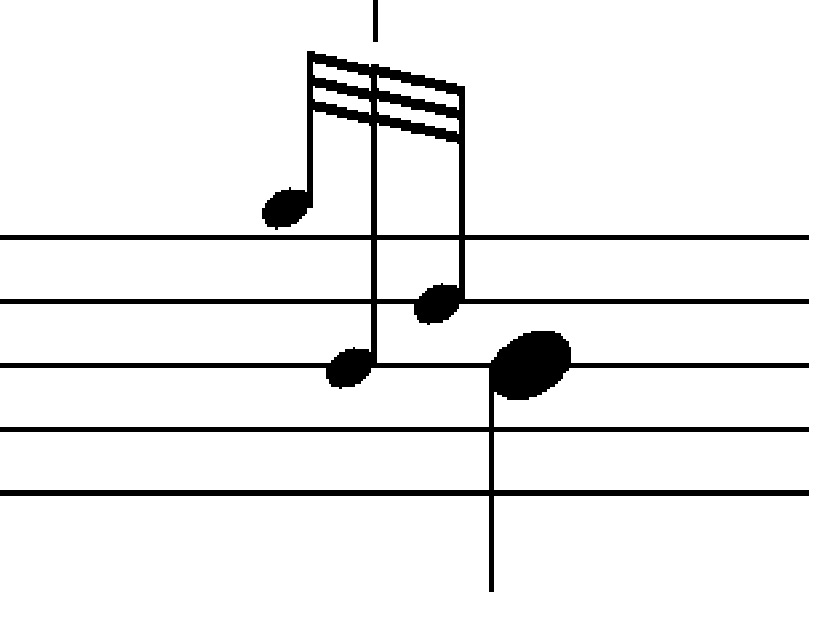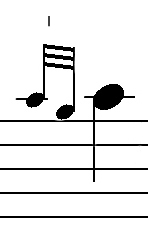
By the Editor
One of the issues that seemed to exercise the minds of several students at the Florida school a couple of months back was where the beat falls when playing our ceòl beag.
It seems there is stuff out there that is misunderstood. To try to put their minds at ease I ran through my simple explanation:
1 Play a succession of low As on the chanter whilst beating time.
2 Play the same succession of notes this time separating them with a high G gracenote instead of your breath.
Any change? Of course not. Conclusion: the melody note is taking the beat and the gracenote is played marginally beforehand taking time from the note before the graced note, in this case the low A.
3 Repeat the exercise again this time with a doubling on low A. Any change in tempo or beat? No. As before the beat is falling on the low A, but this time it is the first passive gracenote of the grouping (shown with a small vertical dash in the illustration below). The second gracenote follows slightly after the beat.

This audio might explain things better:
You will hear from that that the beat note does not alter one iota regardless of whether it is played with a gracenote or a doubling. If you think it does move, time for a heart to heart with your otologist.
Perhaps the source of some of the confusion is on the half doubling. Here the beat is on the first gracenote. But it is a passive gracenote and essentially part of the theme note:

Now check the throw on D. Play a succession of Es to D beating time as in the audio sample above. Now add the throw. Does the beat change? No. The gracenotes of the throw are taken from the preceding E. Disaster awaits the piper who thinks the beat falls on the low G of the throw, off kilter you go, rhythm abandoned.
Why any of this should be considered important I don’t know. I have played pipes for the best part of 60 years. I have met and discussed our music with most of the informed names in piping and pipe bands in that time.
Never, I mean never, has anyone even mentioned this business of where the beat falls, yet it seems terribly concerning to some people. I hope the above helps clear up any confusion.

















Notwithstanding where the beat should fall in certain embellishments, I teach to focus on the beat of the first grace note of the embellishment. The reason is that so many, especially beginners, rush into the actual beat note, perhaps for fear of not making quick embellishments. Compensating, by having them hold and making the beat on the first note, actually–in time–means they’ll get the bet in the right place…and ca point to a significant degree, having the beat in the right place, after all.
The D throw…what a wonderful opportunity to chest beat for so many over the years. I have read your thoughts on this and other embellishments in the PT. I respectfully vastly prefer the other way. Does not the beat fall on the C of the ‘open’ throw and on the 2nd low G of ‘ours’?
The D grace note is the key.